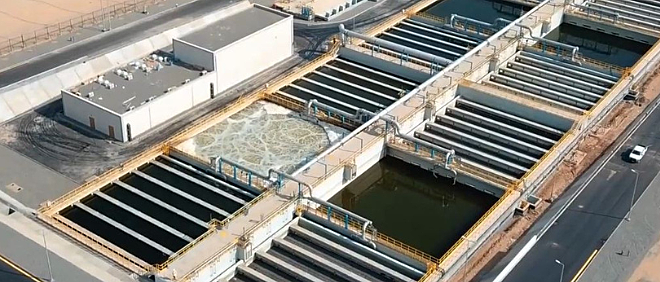What Is Organic Loading In Wastewater Treatment

Understanding Organic Loading in Wastewater Treatment
Introduction
Wastewater treatment is a crucial component in maintaining environmental integrity and public health. One of the key aspects within this domain is understanding and managing “organic loading.” This concept is pivotal in ensuring that wastewater treatment plants (WWTPs) function efficiently and effectively. In this article, we delve deep into what organic loading means, how it impacts wastewater treatment, the various methodologies for its measurement, and the implications of managing it appropriately.
What is Organic Loading?
Organic loading refers to the amount of organic matter present in the wastewater entering a treatment plant. It is generally measured in terms of Biochemical Oxygen Demand (BOD), Chemical Oxygen Demand (COD), or Total Organic Carbon (TOC). These parameters help in quantifying the organic content and are essential indicators of the potential pollution load.
-
- BOD (Biochemical Oxygen Demand): It measures the amount of oxygen required by microorganisms to decompose the organic material in water at a certain temperature over a specified time period, typically five days (BOD5).
- BOD (Biochemical Oxygen Demand): It measures the amount of oxygen required by microorganisms to decompose the organic material in water at a certain temperature over a specified time period, typically five days (BOD5).
-
- COD (Chemical Oxygen Demand): This parameter indicates the total quantity of oxygen required to oxidize both biodegradable and non-biodegradable (chemical) substances in the water.
- COD (Chemical Oxygen Demand): This parameter indicates the total quantity of oxygen required to oxidize both biodegradable and non-biodegradable (chemical) substances in the water.
-
- TOC (Total Organic Carbon): It signifies the total carbon in organic compounds present in water and is an indirect measure of organic molecules.
Understanding these parameters offers insights into the organic pollution level present in wastewater, guiding the treatment process to manage and reduce its environmental impact.
Sources of Organic Loading
Organic loading in wastewater typically originates from a variety of sources, including:
-
- Domestic Sewage: Household waste contributes a significant amount of organic matter due to the presence of food waste, human waste, detergents, and personal care products.
- Domestic Sewage: Household waste contributes a significant amount of organic matter due to the presence of food waste, human waste, detergents, and personal care products.
-
- Industrial Discharge: Industries such as food processing, paper and pulp, pharmaceuticals, and chemicals introduce high levels of organic and inorganic pollutants into wastewater.
- Industrial Discharge: Industries such as food processing, paper and pulp, pharmaceuticals, and chemicals introduce high levels of organic and inorganic pollutants into wastewater.
-
- Agricultural Runoff: Fertilizers, pesticides, and organic waste from farms find their way into water bodies, contributing significantly to the organic loading.
- Agricultural Runoff: Fertilizers, pesticides, and organic waste from farms find their way into water bodies, contributing significantly to the organic loading.
-
- Stormwater Runoff: Organic debris, particularly from urban runoff, contributes to the organic load entering treatment facilities during and after heavy rain events.
- Stormwater Runoff: Organic debris, particularly from urban runoff, contributes to the organic load entering treatment facilities during and after heavy rain events.
-
- Leachate from Landfills: Liquid that drains or ‘leaches’ from a landfill can carry soluble or suspended organic and inorganic materials with it.
Impact of Organic Loading on Wastewater Treatment
The primary goal of wastewater treatment is to remove pollutants and produce effluent that can be discharged into water bodies without causing harm to the environment or human health. Efficient management of organic loading is essential for multiple reasons:
-
- Capacity Management: Excessive organic loading can overwhelm treatment facilities, leading to inefficient treatment and possible regulatory violations.
- Capacity Management: Excessive organic loading can overwhelm treatment facilities, leading to inefficient treatment and possible regulatory violations.
-
- Energy Consumption: High organic loading generally requires more energy for aeration and biological treatment processes to maintain adequate oxygen levels for microorganism activity.
- Energy Consumption: High organic loading generally requires more energy for aeration and biological treatment processes to maintain adequate oxygen levels for microorganism activity.
-
- Sludge Production: Organic matter decomposes into sludge, and higher organic loads result in more sludge production, increasing the need for disposal or further processing.
- Sludge Production: Organic matter decomposes into sludge, and higher organic loads result in more sludge production, increasing the need for disposal or further processing.
-
- Odor and Nuisance Issues: Decomposition of organic matter can generate odors, posing challenges to the operation and community relations around treatment facilities.
- Odor and Nuisance Issues: Decomposition of organic matter can generate odors, posing challenges to the operation and community relations around treatment facilities.
-
- Toxicity and Inhibition: High concentrations of organic substances, especially from industrial sources, can be toxic to microorganisms used in biological treatment processes, inhibiting their activity and potentially necessitating adaptive measures, such as adding specific bacterial strains or modifying environmental conditions.
Methods of Measuring Organic Loading
Accurate measurement of organic loading is crucial for effective wastewater treatment. There are several methods and instruments used for this purpose:
-
- BOD Testing: This is a standard method in which a water sample is incubated at 20°C for five days, and the oxygen consumed is measured. This helps in understanding the degradability and treatment requirement.
- BOD Testing: This is a standard method in which a water sample is incubated at 20°C for five days, and the oxygen consumed is measured. This helps in understanding the degradability and treatment requirement.
-
- COD Testing: A sample is treated with a strong chemical oxidant in acidic conditions to measure the oxygen equivalence of the organic materials present.
- COD Testing: A sample is treated with a strong chemical oxidant in acidic conditions to measure the oxygen equivalence of the organic materials present.
-
- TOC Measurement: It involves converting organic carbon in a sample to carbon dioxide, which is then quantified to deduce the amount of organic matter.
- TOC Measurement: It involves converting organic carbon in a sample to carbon dioxide, which is then quantified to deduce the amount of organic matter.
-
- Spectroscopy Methods: Techniques like UV-VIS spectrophotometry can provide rapid analysis of organic content by measuring the absorbance of light by organic compounds at specific wavelengths.
- Spectroscopy Methods: Techniques like UV-VIS spectrophotometry can provide rapid analysis of organic content by measuring the absorbance of light by organic compounds at specific wavelengths.
-
- Online Monitoring Tools: Modern WWTPs are equipped with online sensors and analyzers to continuously monitor organic loading in real-time, allowing for timely adjustments in treatment processes.
Biological Processes Affected by Organic Loading
Understanding how organic loading impacts various biological treatment processes can help optimize wastewater treatment:
-
- Activated Sludge Process: High organic loading increases the demand for oxygen as microorganisms work to decompose the organic material. Proper aeration and biomass management are crucial.
- Activated Sludge Process: High organic loading increases the demand for oxygen as microorganisms work to decompose the organic material. Proper aeration and biomass management are crucial.
-
- Trickling Filters: Excessive organic matter can clog filter media, reducing efficiency. Regular maintenance and load management are key.
- Trickling Filters: Excessive organic matter can clog filter media, reducing efficiency. Regular maintenance and load management are key.
-
- Anaerobic Digesters: These are sensitive to the types and concentrations of organic loading. Optimal performance depends on maintaining balance between organic loading rate and the hydraulic retention time.
- Anaerobic Digesters: These are sensitive to the types and concentrations of organic loading. Optimal performance depends on maintaining balance between organic loading rate and the hydraulic retention time.
-
- Sequential Batch Reactors (SBRs): Managing organic load is crucial for the timing and phases of operation, as overloading can reduce effluent quality.
Strategies for Managing Organic Loading
-
- Pre-treatment: Industrial pretreatment programs can significantly reduce organic loading by treating at the source before discharge to municipal systems.
- Pre-treatment: Industrial pretreatment programs can significantly reduce organic loading by treating at the source before discharge to municipal systems.
-
- Load Equalization: Equalization basins buffer peak loads, providing a more uniform influent to the treatment plant and preventing overloading.
- Load Equalization: Equalization basins buffer peak loads, providing a more uniform influent to the treatment plant and preventing overloading.
-
- Advanced Oxidation Processes (AOPs): These can be employed to reduce highly concentrated organic loads before biological treatment.
- Advanced Oxidation Processes (AOPs): These can be employed to reduce highly concentrated organic loads before biological treatment.
-
- Biological Nutrient Removal (BNR): This involves optimizing conditions for microorganisms to remove nutrients and organic matter efficiently.
- Biological Nutrient Removal (BNR): This involves optimizing conditions for microorganisms to remove nutrients and organic matter efficiently.
-
- Chemical Aids: Coagulants and flocculants can assist in settling and removing suspended organic particles.
Conclusion
Effective wastewater treatment hinges on understanding and managing organic loading. By accurately measuring and controlling the organic load, treatment facilities can enhance their efficiency, extend equipment lifespan, and ensure compliance with environmental regulations. As challenges related to organic loading evolve, ongoing research and technological advancements will continue to play a pivotal role in the wastewater treatment sector, paving the way for sustainable water management solutions.


